In the vast realm of ancient Egyptian mythology, the role of zodiac signs holds a fascinating place. Steeped in mystery and enigma, the Egyptians believed that the positions of celestial bodies at the time of their birth could profoundly influence the course of their lives. The ancient Egyptians held a deep reverence for the stars, recognizing their power and significance in the grand cosmos. Through intricate observations and mystical interpretations, they developed a unique system of zodiac signs that played a pivotal role in their cosmology. These celestial symbols became intertwined with daily life, deities, and even architectural marvels. Join us on a journey through the captivating world of the Egyptian zodiac signs, as we unravel their profound influence and delve into their historical and cultural impact.
Contents
- Ancient Egyptian Cosmology
- The Twelve Egyptian Zodiac Signs
- Similarities and Differences with Western Astrology
- Symbolism and Interpretations
- Historical and Cultural Impact
- Conclusion
-
Frequently Asked Questions
- 1. What was the purpose of zodiac signs in ancient Egyptian mythology?
- 2. Were the Egyptian zodiac signs similar to Western astrology?
- 3. How did the ancient Egyptians use zodiac signs in their daily lives?
- 4. Which Egyptian deity was associated with each zodiac sign?
- 5. Did the Sphinx have any correlation with the Egyptian zodiac signs?
- 6. How did zodiac signs influence Egyptian art and architecture?
- 7. Were zodiac signs considered important in burial practices?
- 8. Were zodiac signs used for prophecies and divination?
- 9. Were there any connections between specific zodiac signs and Egyptian mythological figures?
- 10. How did the Egyptian zodiac signs influence the daily lives of the ancient Egyptians?
- References
-
Frequently Asked Questions
- 1. How did the ancient Egyptians view the importance of the stars in their mythology?
- 2. What is the significance of the Sphinx in relation to the Egyptian zodiac signs?
- 3. How did the Egyptian zodiac signs influence daily life and the worship of deities?
- 4. How do the Egyptian zodiac signs differ from Western astrology?
- 5. What are some symbolic connections between the Sun God Ra and the Leo zodiac sign?
- 6. How does the goddess Isis relate to the Virgo zodiac sign?
- 7. How do the Egyptian zodiac signs manifest in ancient art and architecture?
- 8. What role did the Egyptian zodiac signs play in burial practices?
- 9. Did the ancient Egyptians use zodiac signs for prophesies and divination?
- 10. What is the significance of the Egyptian zodiac signs in modern culture?
- References
- Read More
Ancient Egyptian Cosmology
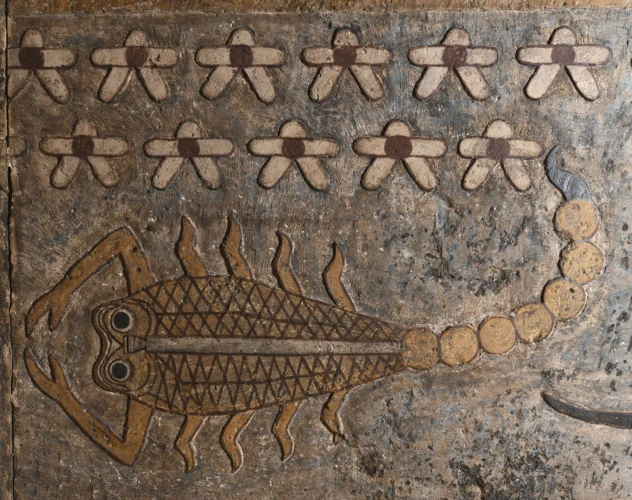
Ancient Egyptian cosmology was deeply intertwined with the celestial realm, as the Egyptians believed that the stars and constellations held immense power and had a direct influence on their lives. They held a profound reverence for celestial bodies, considering them to be manifestations of their gods and goddesses. The Egyptians believed that these gods controlled every aspect of life on Earth, and by studying the heavens, they could gain insight into the divine realm. The positioning of the stars was of utmost importance in their cosmology, as it guided their agricultural practices, religion, and even their daily lives. The concept of zodiac signs was also integral to their cosmology, as it provided a framework for understanding the unique traits and destiny of individuals based on the time and location of their birth. This intricate system of celestial beliefs and interpretations formed a crucial part of ancient Egyptian culture, influencing their art, architecture, religious practices, and burial rituals. To delve deeper into the mysteries of the constellations in ancient Egyptian cosmology, you can explore the enigmatic Scorpius constellation and the rich cultural significance of ancient constellations.
1.1 The Importance of the Stars
The importance of the stars in ancient Egyptian cosmology cannot be overstated. The Egyptians viewed the stars as celestial guides, divine beings that held immense power and influence over their lives. They believed that the gods and goddesses resided in the heavenly realm and that the positioning of the stars represented their divine will. By observing the stars, the ancient Egyptians sought to decipher messages from the gods and gain insight into their future.
The stars played a crucial role in various aspects of Egyptian life, including agriculture and navigation. The annual flooding of the Nile River, which was central to the fertility of their land, was determined by the movement of specific stars. The heliacal rising of certain stars, such as Sirius, signaled the impending flood, providing the Egyptians with vital information for their agricultural practices.
The stars were deeply intertwined with religious beliefs and rituals. The Egyptians believed that the gods and goddesses manifested themselves as celestial bodies, and by studying the stars, they could better understand the will of the divine. They performed rituals and built temples aligned with specific stars and constellations to establish a direct connection with the divine realm.
The significance of the stars extended beyond the earthly realm as well. The Egyptians believed in an afterlife, and they believed that the deceased would embark on a celestial journey among the stars. The positioning of the stars at the time of their death was believed to influence their journey in the afterlife. Thus, the stars held immense symbolic and spiritual importance to the Egyptians.
To explore the intricate relationship between the stars and astrology in ancient Egypt, you can delve into the fascinating subject of Ophiuchus and its relationships and compatibility matches.
1.2 The Concept of Zodiac Signs
The concept of zodiac signs in ancient Egyptian mythology played a crucial role in their cosmology. The Egyptians believed that the positions of celestial bodies at the time of a person’s birth could determine their personality traits, destiny, and even their interactions with the divine. This belief was rooted in the notion that the gods and goddesses governed every aspect of life, and by understanding the celestial realm, one could gain insight into their own existence. The zodiac signs were derived from the division of the night sky into twelve equal sections, each associated with a specific constellation. These signs were represented by animals, symbols, or mythical creatures, and each sign possessed its own unique qualities and characteristics. The Egyptians used these zodiac signs to create individual horoscopes, which provided guidance on various aspects of life, such as love, career, and health. The concept of zodiac signs extended beyond the individual, influencing the interpretation of celestial events and establishing a connection between the divine and the earthly realm. Through their understanding of zodiac signs, the ancient Egyptians sought to navigate the complexities of life and gain a deeper understanding of their place in the universe.
The Twelve Egyptian Zodiac Signs
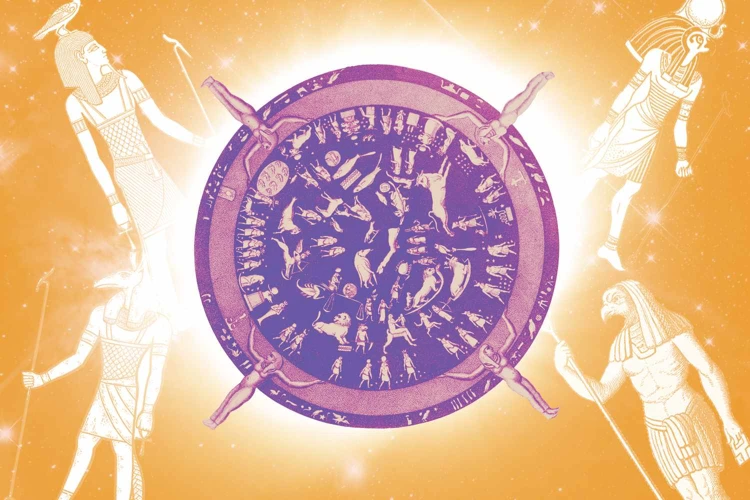
The ancient Egyptians developed a system of twelve zodiac signs that played a significant role in their cosmology and understanding of human characteristics. Each zodiac sign was associated with specific dates and had its own unique symbolism and attributes. The twelve Egyptian zodiac signs consisted of the Nile, Amon-Ra, Mut, Geb, Thoth, Horus, Anubis, Set, Isis, Osiris, Bastet, and Sekhmet. These zodiac signs were not only connected to celestial bodies but also had correlations with various aspects of daily life and the pantheon of Egyptian deities. For instance, the Sphinx, a prominent symbol in Egyptian mythology, is believed to have a correlation with the zodiac signs of Amon-Ra and Horus. The influence of these zodiac signs extended beyond the personal realm, shaping the lives of individuals and impacting various aspects of cultural and religious practices of ancient Egypt.
2.1 The Sphinx and Its Correlation
The Sphinx, a majestic and enigmatic creature with the body of a lion and the head of a human, holds a fascinating correlation with the Egyptian zodiac signs. In ancient Egyptian mythology, the Sphinx is closely associated with the Leo zodiac sign. The Leo zodiac sign is represented by the lion, symbolizing strength, power, and leadership. The Sphinx, with its lion-like body, embodies these qualities and is often seen as a guardian figure in Egyptian art and architecture.
The correlation between the Sphinx and the Leo zodiac sign goes beyond just their physical resemblance. Both the Sphinx and Leo are associated with the sun. In Egyptian mythology, the sun god Ra was closely linked to the Sphinx, and it was believed that the Sphinx guarded the entrance to the tomb of the pharaoh. The sun, as a celestial body, represents vitality, energy, and life force. Similarly, individuals born under the Leo zodiac sign are believed to possess these qualities and have a natural charismatic presence.
The Sphinx is often depicted with the Pharaoh’s headdress or crown, emphasizing its connection to royalty and leadership. This aligns with the leadership traits commonly associated with individuals born under the Leo zodiac sign. The Sphinx’s role as a guardian and its association with royalty further strengthens the correlation between the Sphinx and the Leo zodiac sign.
The Sphinx’s presence in ancient Egyptian art and architecture makes it an integral part of their culture and belief system. Its enigmatic nature, combined with its correlation to the Leo zodiac sign, adds to its allure and mystery. The symbolism and significance of the Sphinx in relation to the Egyptian zodiac signs reveal the depth and complexity of ancient Egyptian mythology.
2.2 Influence on Daily Life and Deities
The influence of the Egyptian zodiac signs on daily life and deities was profound and pervasive. The Egyptians believed that the alignment of the stars and the zodiac signs played a significant role in shaping various aspects of their daily lives. Individuals consulted astrologers and priests to gain insight into their personality traits, strengths, weaknesses, and potential destiny based on their corresponding zodiac sign. It affected their choices regarding careers, relationships, and even their compatibility with others. The zodiac signs guided important decisions, such as when to plant crops, embark on journeys, or conduct religious ceremonies. For example, those born under the sign of the Nile (June 19 – July 14) were believed to be protective and nurturing, making them ideal candidates for professions associated with service and caretaking. The Egyptians also associated each zodiac sign with a particular god or goddess, attributing specific characteristics and powers to them. These deities were worshipped and revered, and their attributes were reflected in the traits and qualities associated with each zodiac sign. For instance, the goddess Hathor was connected to the Taurus zodiac sign (April 20 – May 7), symbolizing beauty, femininity, and fertility. This intricate interplay between the zodiac signs and daily life, as well as their associations with revered deities, showcased the central role these celestial symbols held within Egyptian society.
Similarities and Differences with Western Astrology
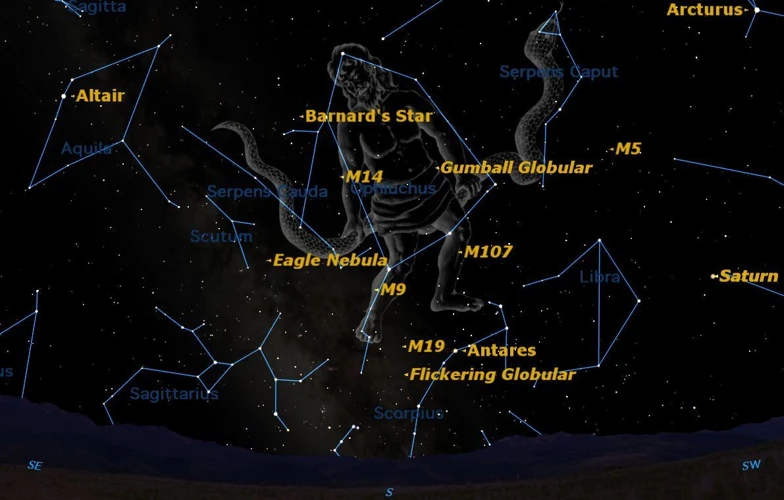
When comparing the Egyptian zodiac system to Western astrology, there are both distinct similarities and intriguing differences. One key similarity is the use of twelve zodiac signs. Both the Egyptian and Western systems divide the celestial sphere into twelve equal parts, each associated with a specific sign. However, the correspondence between these signs and their meanings differs significantly. For example, in Western astrology, the zodiac sign of Aries is associated with the ram, representing assertiveness and leadership. In Egyptian astrology, the corresponding sign is “The Falcon,” symbolizing Horus, the sky god. Another striking difference lies in the inclusion of the 13th sign in Western astrology, known as Ophiuchus. This constellation, representing a serpent-bearer, is not present in the Egyptian system. Additionally, while Western astrology often considers the position of the sun at the time of birth, the Egyptians focused more on the rising sign or ascendant as a significant factor. Despite these disparities, both systems share the fundamental belief that celestial bodies influence human characteristics and destiny. The specific interpretations, myths, and cultural contexts, however, vary between Egyptian and Western astrology, offering a captivating glimpse into the diverse ways in which ancient civilizations sought to understand and navigate their lives through the cosmos.
Symbolism and Interpretations
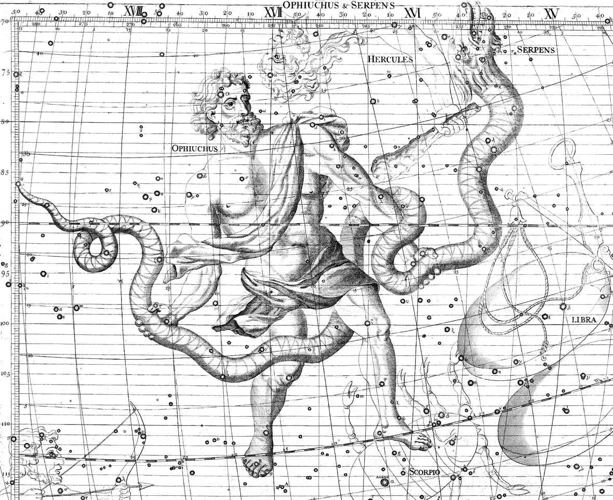
Symbolism and interpretations played a crucial role in the ancient Egyptian understanding of zodiac signs. Each of the twelve zodiac signs held deep symbolic meanings that were associated with specific deities, celestial phenomena, and natural elements. For instance, the Leo zodiac sign was closely linked to the powerful Sun God Ra, symbolizing strength, leadership, and courage. The Virgo zodiac sign, on the other hand, was associated with the goddess Isis, representing purity, fertility, and nurturing qualities. These symbolic connections provided the Egyptians with insights into the personalities, characteristics, and destinies of individuals born under each zodiac sign. The Egyptians believed that the positions and alignments of the celestial bodies could be interpreted as messages from the gods, guiding them in their daily lives, decision-making processes, and even prophecies. The interplay of symbolism and interpretations added depth and significance to the Egyptian zodiac signs, making them an integral part of their culture and belief system.
4.1 The Sun God Ra and the Leo Zodiac Sign
In the realm of Egyptian mythology, the Sun God Ra held immense significance. As the powerful deity associated with the sun, Ra was believed to be the creator of the universe and the ruler of both the celestial and earthly realms. Ra’s connection to the Leo zodiac sign goes beyond their shared association with the sun. The ancient Egyptians saw a strong correlation between the characteristics of Leo and the attributes of Ra. Leo, represented by the majestic lion, shares qualities such as strength, courage, and leadership with the Sun God. Just as the lion is considered the king of the animal kingdom, Ra was revered as the supreme ruler in Egyptian cosmology. Both Leo and Ra embody a commanding presence and a magnetic charisma that draws others towards them. The lion’s association with the sun, as the ruler of the animal world, reflects Ra’s association with the all-encompassing power and life-giving qualities of the sun. This connection between Ra and Leo not only strengthens their symbolism individually but also highlights the intertwining of celestial and earthly forces in ancient Egyptian mythology.
4.2 The Goddess Isis and the Virgo Zodiac Sign
The Goddess Isis and the Virgo Zodiac Sign:
In ancient Egyptian mythology, the goddess Isis played a significant role, and her connection to the Virgo zodiac sign holds profound symbolism. Isis was revered as a powerful deity associated with fertility, rebirth, and motherhood. She was often depicted with a headdress resembling the horned sun, symbolizing her connection to the sky and the sun god Ra. This celestial association mirrors the qualities attributed to the Virgo zodiac sign, known for its analytical nature, practicality, and attention to detail.
The link between Isis and Virgo can be further understood through the emphasis on purity and righteousness. Isis was regarded as a goddess of wisdom and magic, symbolizing purity of the soul. Similarly, Virgo is often associated with qualities of purity, modesty, and a strong sense of ethics. This connection suggests that those born under the Virgo zodiac sign may possess qualities that align with the virtuous attributes of Isis.
Isis was known for her nurturing and caring nature, as she protected and cared for her son Horus. This aspect resonates with the nurturing tendencies of Virgos, who are often seen as supportive and compassionate individuals. Both Isis and Virgo exemplify the importance of service to others and the desire to bring healing and order to the world.
In addition to these character traits, the Virgo zodiac sign is also associated with the element of Earth. This earthly connection embodies qualities of practicality, reliability, and a strong work ethic. These attributes align with Isis’ role as a goddess of agriculture and her association with the fertility of the land.
The connection between the goddess Isis and the Virgo zodiac sign reveals a deep intertwining of mythology and astrology, highlighting the symbolic significance that the ancient Egyptians attributed to these celestial entities. By understanding the mythology behind this correlation, we gain insight into the cultural beliefs and values that influenced the ancient Egyptians’ interpretation of the zodiac signs.
4.3 Other Symbolic Connections
The Egyptian zodiac signs go beyond simple correlations with deities and celestial bodies. There are numerous other symbolic connections that add depth and complexity to the interpretation of these signs. For example, the zodiac sign Taurus symbolizes fertility and abundance, reflecting the Egyptian’s reverence for agriculture and the Nile River’s life-giving properties. Meanwhile, the zodiac sign Scorpio embodies regeneration and transformation, mirroring the Egyptian belief in the cyclical nature of life and death. The zodiac sign Libra’s association with balance and justice aligns with the Ma’at, the universal principle of harmony and truth revered by the ancient Egyptians. The symbolic connections extend even further, with zodiac signs like Gemini representing duality and the interconnectedness of opposites, while Sagittarius personifies exploration and the pursuit of knowledge. These symbolic connections enrich the interpretation of the Egyptian zodiac signs, offering glimpses into the values, beliefs, and intricacies of ancient Egyptian culture.
Historical and Cultural Impact
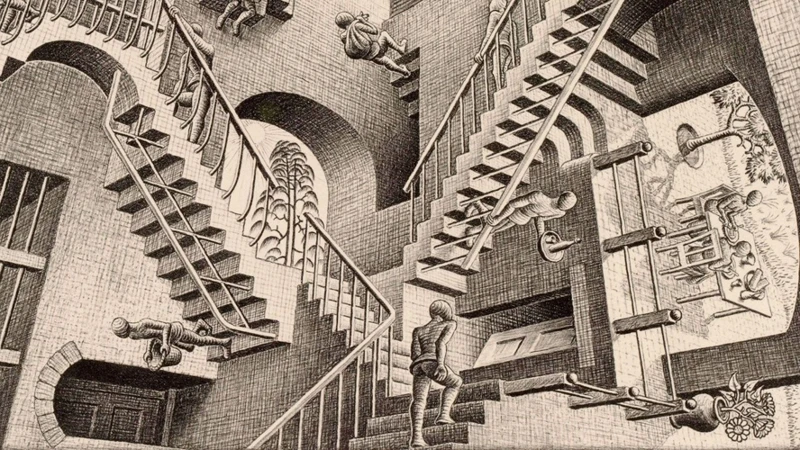
The historical and cultural impact of the Egyptian zodiac signs is profound and far-reaching. These celestial symbols played a significant role in various aspects of ancient Egyptian society, leaving their mark on art, architecture, and even burial practices. In ancient Egyptian art and architecture, zodiac signs were skillfully incorporated, depicting various celestial figures and creatures in elaborate murals, sculptures, and temple reliefs. These representations not only showcased the Egyptians’ deep fascination with the stars but also served as symbols of divine protection and guidance. Additionally, zodiac signs held a crucial place in burial practices, where they were often inscribed on coffins or tombs as a means of ensuring the individual’s safe journey into the afterlife. Divination and prophecies were also heavily influenced by zodiac signs, as priests and seers would interpret celestial alignments and positions to predict future events and gain insight into cosmic forces. The cultural significance of these celestial symbols remains a testament to the ancient Egyptians’ profound connection to the cosmos and their quest for understanding the mysteries of the universe.
5.1 Zodiac Signs in Ancient Egyptian Art and Architecture
Zodiac signs held a significant place in ancient Egyptian art and architecture, serving as a powerful source of symbolism and inspiration. In their artistic representations, the Egyptians often incorporated zodiac signs as a means of conveying specific meanings and associations. These signs were commonly depicted in murals, tomb paintings, and sculptures, adding a layer of mystical significance to the artwork. For example, the famous Dendera Zodiac, found in the Temple of Hathor, showcases the twelve zodiac signs along with various deities and symbols. This celestial depiction not only represented the connection between the cosmos and the earthly realm but also conveyed spiritual beliefs and cosmic order. Additionally, zodiac signs adorned the walls of temples and other sacred structures, emphasizing their importance in religious rituals and ceremonies. The intricate details and careful placement of these signs showcased the Egyptians’ meticulous attention to aligning their physical creations with the harmonious patterns observed in the celestial realm. The integration of zodiac signs in ancient Egyptian art and architecture not only added aesthetic beauty but also reinforced their cosmological beliefs, allowing individuals to connect with the divine and understand their place in the grand cosmic scheme.
5.2 Zodiac Signs in Burial Practices
Zodiac signs held a significant place in ancient Egyptian burial practices, as the Egyptians believed that the position of celestial bodies at the time of a person’s birth influenced their spiritual journey in the afterlife. When preparing for burial, the Egyptians incorporated the individual’s zodiac sign into the funeral rituals and tomb decorations. This allowed them to honor and align the deceased person’s spirit with their corresponding celestial symbol.
In the burial practices, various symbolic representations of zodiac signs were depicted. These representations often included the specific animal or deity associated with the zodiac sign. For example, a person born under the Leo zodiac sign might have their tomb adorned with depictions of lions, a symbol directly connected to the powerful sun god Ra.
Additionally, the Egyptians believed in the concept of duat, the realm of the dead. They believed that this realm was intricately connected to the celestial realm, and the position of the stars and zodiac signs played a crucial role in navigating the afterlife. The belief was that by aligning the deceased person’s tomb with their zodiac sign and its respective celestial influence, their spirit would be guided and protected in the eternal journey.
Burial practices also involved inscriptions and texts related to astrology and zodiac signs. These texts, known as Coffin Texts and Book of the Dead, contained spells, prayers, and instructions that aimed to assist the deceased in their journey through the afterlife. The inclusion of zodiac sign symbolism in these texts further reinforced the belief in the connection between the celestial and earthly realms.
The integration of zodiac signs in burial practices was a testament to the profound belief in the influence of the stars and constellations in the realm of the afterlife. By incorporating zodiac sign symbolism, the Egyptians sought to ensure that the deceased’s spirit would be guided and protected by the celestial forces on their eternal journey.
5.3 Zodiac Signs in Prophecies and Divination
Zodiac signs played a prominent role in ancient Egyptian prophecies and divination practices. The Egyptians believed that the alignment of the stars and planets could offer glimpses into the future and provide guidance on important decisions. In the realm of divination, astrologers and priests would meticulously analyze the zodiac signs to decipher messages from the gods and gain insight into the destiny of individuals and the course of events. This involved studying the specific zodiac sign under which a person was born and interpreting its symbolism, characteristics, and potential influences on their life journey. By consulting the zodiac signs, Egyptian seers and fortune-tellers could reveal glimpses of future triumphs, challenges, love affairs, and even potential conflicts. The interpretations of the zodiac signs in prophecies and divination were highly intricate and often required a deep understanding of the mythological and symbolic associations of each sign. Notably, the priests of ancient Egypt had immense authority in deciphering these messages, and their interpretations could profoundly impact the lives of individuals seeking guidance. Prophecies and divination practices based on zodiac signs were extensively utilized in important matters such as royal decisions, military campaigns, and even personal life choices. The Egyptians believed that the celestial powers and divine connections of the zodiac signs were powerful tools for shaping the future and making informed decisions. As such, the role of zodiac signs in prophecies and divination held great significance and impact in ancient Egyptian society.
Conclusion
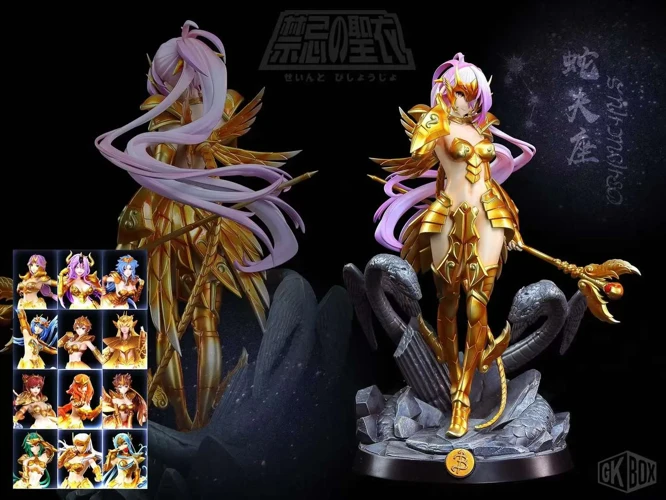
In conclusion, the role of zodiac signs in ancient Egyptian mythology is a testament to the profound connection between the celestial and earthly realms in their cosmology. The Egyptians’ deep reverence for the stars and their belief in their influence on daily life shaped their culture, art, and religious practices. The twelve Egyptian zodiac signs, represented by various animals and symbols, provided a framework for understanding an individual’s traits and destiny based on their birth date. These zodiac signs were not limited to personal interpretations but also had symbolic connections to deities, such as the correlation between the Sun God Ra and the Leo zodiac sign, and the Goddess Isis and the Virgo zodiac sign. Moreover, the historical and cultural impact of zodiac signs in ancient Egypt is evident in their art and architecture, where the symbols of zodiac signs were prominently featured. In burial practices, zodiac signs played a role in determining an individual’s fate in the afterlife. Furthermore, zodiac signs were crucial in prophecies and divination, offering guidance and insights into the future. The intricate and fascinating relationship between zodiac signs and ancient Egyptian mythology continues to captivate our imagination and reminds us of the enduring power of the stars in shaping human beliefs and cultures throughout history.
Frequently Asked Questions

1. What was the purpose of zodiac signs in ancient Egyptian mythology?
The ancient Egyptians believed that zodiac signs played a crucial role in understanding a person’s unique traits and destiny based on their birth date and location. These celestial symbols were thought to provide insights into one’s personality, relationships, and overall life path.
2. Were the Egyptian zodiac signs similar to Western astrology?
While there are some similarities between Egyptian zodiac signs and Western astrology, they are distinct systems. Egyptian zodiac signs were based on the decans, which divided the night sky into thirty-six equal parts, while Western astrology focuses on the twelve zodiac signs corresponding to the positions of the sun throughout the year.
3. How did the ancient Egyptians use zodiac signs in their daily lives?
Zodiac signs in ancient Egypt had a practical application in daily life. They were consulted for making important decisions, such as marriages, business ventures, and even agricultural practices. The positions of the celestial bodies were believed to offer guidance and bring harmony and success.
4. Which Egyptian deity was associated with each zodiac sign?
Each zodiac sign in ancient Egyptian mythology was aligned with a specific deity. For example, Aries was associated with the god Amun-Ra, while Taurus was linked to the goddess Hathor. These connections deepened the symbolism and meaning of each zodiac sign.
5. Did the Sphinx have any correlation with the Egyptian zodiac signs?
Yes, the Great Sphinx of Giza, with the body of a lion and the head of a human, held significant symbolic connections to the Egyptian zodiac. The Sphinx represented the alignment of Leo with the rising sun, signifying power, protection, and divine rulership.
6. How did zodiac signs influence Egyptian art and architecture?
Zodiac signs played a prominent role in the artistic expressions of ancient Egypt. They were intricately incorporated into temple reliefs, tomb paintings, and monumental structures, reflecting the belief in the divine influence of the stars and the connection between the gods and humanity.
7. Were zodiac signs considered important in burial practices?
Yes, the ancient Egyptians believed that the position of the stars at the time of death affected a person’s afterlife journey. Zodiac signs were often inscribed on tombs and burial goods, serving as a guide and protection for the deceased as they made their celestial voyage.
8. Were zodiac signs used for prophecies and divination?
Absolutely. Zodiac signs were used as a basis for divination and fortune-telling in ancient Egypt. Skilled priests and seers would interpret the positions of the stars and zodiac signs to provide insights into the future, offering guidance and predictions.
9. Were there any connections between specific zodiac signs and Egyptian mythological figures?
Absolutely. For instance, the zodiac sign Leo was associated with the powerful Sun God Ra, symbolizing strength, leadership, and divine authority. Similarly, the goddess Isis was connected with the zodiac sign Virgo, representing fertility, nurturing, and wisdom.
10. How did the Egyptian zodiac signs influence the daily lives of the ancient Egyptians?
Egyptian zodiac signs were woven into the fabric of daily life in ancient Egypt. They guided decision-making, influenced personal relationships, and helped individuals understand their strengths and weaknesses. The zodiac signs provided a comprehensive framework for self-reflection and a deeper connection with the cosmos.
References
Frequently Asked Questions

1. How did the ancient Egyptians view the importance of the stars in their mythology?
The ancient Egyptians believed that the stars held significant meaning and were closely tied to their mythology. They saw the stars as divine entities that influenced various aspects of life, including the fate and destiny of individuals.
2. What is the significance of the Sphinx in relation to the Egyptian zodiac signs?
The Sphinx played a significant role in the Egyptian zodiac signs. It was believed to guard and protect the entrance to the heavenly realm, where the zodiac signs resided. The alignment of the Sphinx with specific stars and constellations was also attributed to its connection with the zodiac signs.
3. How did the Egyptian zodiac signs influence daily life and the worship of deities?
The Egyptian zodiac signs had a profound impact on daily life and the worship of deities. Individuals born under specific zodiac signs were believed to possess unique characteristics and traits associated with their sign. These traits influenced various aspects of life, such as personal relationships, career choices, and even religious practices.
4. How do the Egyptian zodiac signs differ from Western astrology?
While both Egyptian zodiac signs and Western astrology share similarities, there are notable differences between the two. Egyptian astrology focuses on the alignment of specific constellations and the influence of deities, whereas Western astrology primarily revolves around the position of the sun at the time of birth.
5. What are some symbolic connections between the Sun God Ra and the Leo zodiac sign?
The Leo zodiac sign is associated with the Sun God Ra in Egyptian mythology. Both are symbols of power, leadership, and royalty. The lion, which is the symbol of Leo, represents the strength and authority of Ra, further linking the two entities together in symbolism.
6. How does the goddess Isis relate to the Virgo zodiac sign?
The Virgo zodiac sign is closely connected to the goddess Isis in Egyptian mythology. Isis is often depicted as a nurturing and wise figure, similar to the qualities associated with Virgo. Both represent purity, healing, and fertility.
7. How do the Egyptian zodiac signs manifest in ancient art and architecture?
The Egyptian zodiac signs are frequently depicted in ancient art and architecture. They can be found in wall paintings, temple reliefs, and even in the design and layout of sacred structures. These representations serve as a reminder of the cosmic influence and spiritual significance attributed to the zodiac signs in ancient Egyptian culture.
8. What role did the Egyptian zodiac signs play in burial practices?
The Egyptian zodiac signs had a significant role in burial practices. The deceased’s zodiac sign was often taken into consideration when determining rituals, offerings, and religious ceremonies associated with the burial. It was believed that aligning these practices with the individual’s zodiac sign would ensure a smooth transition into the afterlife.
9. Did the ancient Egyptians use zodiac signs for prophesies and divination?
Yes, the ancient Egyptians utilized zodiac signs for prophecies and divination purposes. Astrologers and priests would interpret the alignment of the stars and the zodiac signs to make predictions about future events, offering guidance and insights into various aspects of life, such as relationships, health, and success.
10. What is the significance of the Egyptian zodiac signs in modern culture?
The Egyptian zodiac signs continue to have a cultural and historical impact in modern society. They have inspired various art forms, such as jewelry, tattoos, and fashion, as people find connections with their personality traits and symbolism. Additionally, the Egyptian zodiac signs serve as a reminder of the ancient wisdom and mystical beliefs that still captivate our imagination today.
References
- Egyptian Astrology: The 12 Zodiac Signs of the Ancient World
- Ancient Egyptian Astrology: Find Your Zodiac Sign







